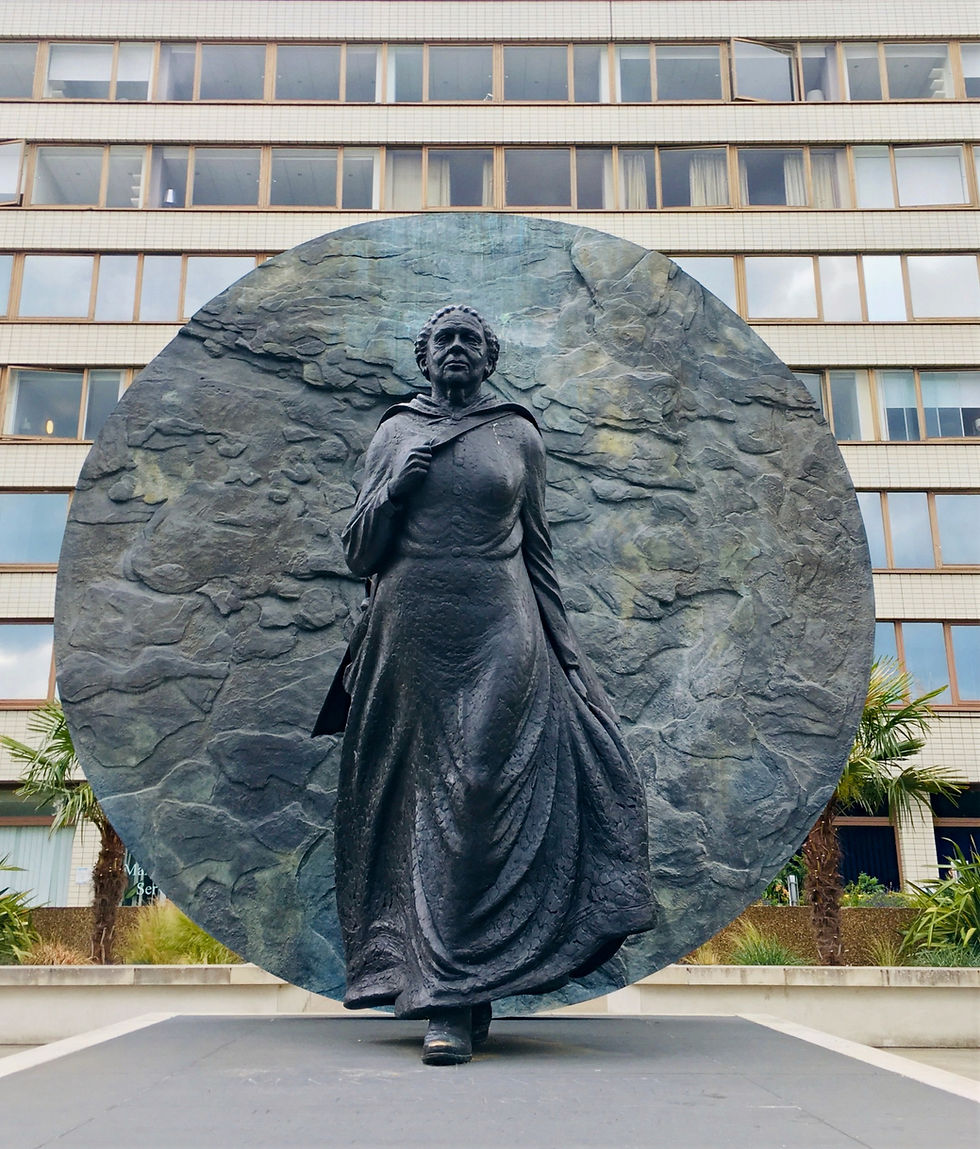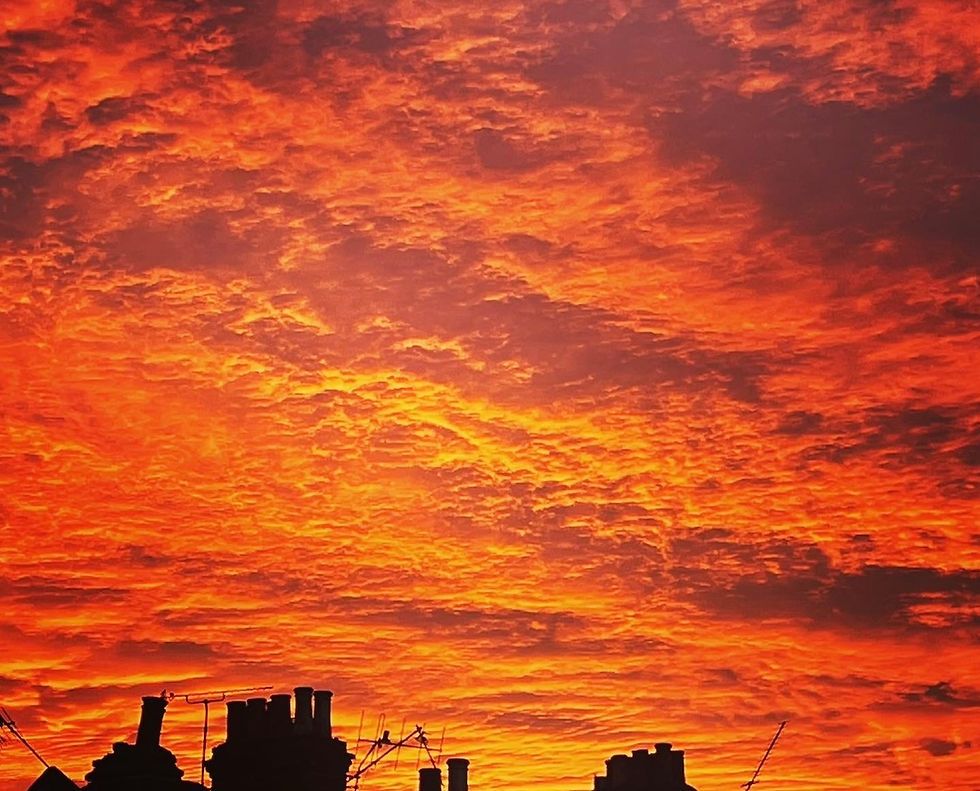London’s Black Sheroes
- anne

- Jun 11, 2020
- 5 min read
Updated: Oct 3, 2020

This blog was written at a time of huge political unrest in the US following the murder of George Floyd in Minneapolis on 25 May 2020. While it is written in the context of a ‘travel blog’ focusing on black women in London, past and present, it is shaped by recent events.
Disclaimer : As a white European intersectional feminist writing about race, I might (likely will) get this wrong – if / when I do, it is important that you call me out ... I am learning and I want to learn more. I will not stand in silence and watch as black and brown people, here and elsewhere, continue to face discrimination in every aspect of their lives, continue being attacked or murdered because of the colour of their skin. Enough is enough! #AllBlackLivesMatter
Black and brown women - or Black And Minority Ethnics (BAME) as they are also known as - have long played an important role in every aspect of London life – mostly, however, their stories and legacy have been erased.
Florence Nightingale, Emeline Pankhurst and Mary Wollstonecraft have become well established household names – and rightly so, they have many achievements under their belts and should be duly celebrated. It has after all taken long enough for them to reach the pantheon of all-time greats. But - have you heard of Mary Prince, Mary Seacole or Princess Sophia Duleep Singh? These trailblazers 'somehow' slipped history’s nets, because for far too long we have privileged white hero-in-es and role models - misrepresenting the reality and diversity of British life, as well as multi-ethnic successes and achievements.
It really struck me, when Reni Eddo Lodge mentions in the opening paragraph of her must read ‘Why I’m no longer talking to white people about race’; that as a young girl, she’d only ever encountered black history through American-centric lessons at school and a million miles away from her life in North London.
If you are white, take a moment ... imagine what it must feel like.
Starting with slavery and colonialism seems particularly timely – especially after the statue of slave trader Edward Colston was toppled in Bristol and calls for the statue of Cecil Rhodes to be taken down from Oxford’s Oriel College are finally being heard. But the colonial narrative is deeply cemented in the British - and European - psyche that it is very difficult to shift.
Mary Prince (c. 1 October 1788 – after 1833) was the first black woman in Britain to publish the account of her life, The History of Mary Prince: A West Indian Slave (1831), and the first to file a petition to Parliament. Herstory, published at a time when slavery was still legal in England, played a pivotal role in the campaign to abolish it. Today, her story remains largely unheard and there is no memorial commemorating her.
It is particularly befitting, in the middle of this pandemic which has seem people of BAME background disproportionately affected in the UK, to focus on healthcare workers, many of whom also happen to be black and brown – and to shine the light on the work of Mary Seacole.
Mary Seacole (23 November 1805 – 14 May 1881) was a nurse and a healer from the Caribbean – of joint mixed Jamaican and Scottish heritage. Inspired by her mother’s extensive knowledge of plants and skills as a healer, Mary embarked on a remarkable journey that took her from Jamaica to London via Panama.

In London, she tried to join a contingent of nurses headed for the Crimean Peninsula, but was rejected several times, including by Florence Nightingale’s organisation, wondering whether it was at all "possible that American prejudices against colour had some root here? Did these ladies shrink from accepting my aid because my blood flowed beneath a somewhat duskier skin than theirs?"
It didn’t deter Mary. Woman on a mission, she set off on her own dime and built a ‘hotel’ and store in the settlement of Balaklava. From there, in addition to the provision of food, drink and other essentials, she treated injured soldiers on the battlefield. She quickly became known as ‘Mother Seacole’, a figure so popular that in 1857 upon returning to England 80,000 people turned up to honour her as a Crimean hero. Her autobiography, the Wonderful Adventures of Mrs Seacole in Many Lands, the first written by a ‘free’ black woman in Britain, became a best seller overnight.
After her death, however, her story fell into obscurity for over a century. It was not until 2004, when she was voted into first place in an online poll for ‘Great Black Britons’, that Mary Seacole reclaimed her place in history. In 2007, a blue plaque was erected at 14 Soho Square, where she wrote her adventures, and, 9 years later, after 12 ½ years of campaigning and fundraising, including by the illustrious Professor Dame Elizabeth Anionwu, a statue of Mary Seacole was finally unveiled in the grounds of St Thomas Hospital. It is the first statue of a black woman in the UK.
There are of course many more black and brown women to honour - from poet Phillis Wheatly, suffragette Sophia Duleep Singh or Pre-Raphaelite model Fanny Eaton whose stories and lives are so inextricably linked to Britain’s dark and violent colonial past. Every single one of them making Britain the place it is today, every single one of them deserves her rightful place in our history – as do their many contemporaries.

This brings me full circle to Bernardine Evaristo whose mesmerising novel Girl, Woman, Other* I’ve just finished reading. Last year – in 2019! – she became the first black woman and first black British author to win the Booker prize, after 40 years in the arts! Another first.
In a recent interview – At home with Bernardine Evaristo - she reflects on the black British experience; on how little it has been explored and how underrepresented black authors continue to be in the UK today. She highlights the shift – as opposed to change! - brought about by the Me Too and Black Lives Matter movements – including how they have influenced how her writing is received.
Girl, Woman, Other is a fascinating, intricate, intimate portrait of 12 (mostly black) women and girls in Britain (mostly in London). It explores their lives and sexualities, motherhood, girlhood, gender identities, and race. Through her intersectional feminist lens, Evaristo truly captures their realities over the space of a century. It is extremely powerful and moving - truly a literary tour de force and I highly recommend it.
Recent events have led to a surge in demand for black writers. At long last! If you are looking for ideas, here is a non-exhaustive list - a mix of UK and US authors, fiction and non-fiction, that I have read, loved and learned so much from:

Octavia Butler; Kindred
Angela Davies; Women, Race, Class
Bernardine Evaristo; Girl Woman Other
Toni Morrison; The Bluest Eyes
Lola Olufemi; Feminism, Interrupted
Reni Eddo Lodge; Why I’m no longer talking to white people about race
For more inspiration, check out: @blackfeministbookshop and @antiracistbookshelf on insta.
Consider supporting organisations fighting for the rights of black and brown women - solidarity has never been more important:
Imkaan - www.imkann.org.uk
Southall Black Sisters - www.southallblacksisters.org.uk
Sistah Space - www.sistahspace.org
Women for Refugee Women - www.refugeewomen.org





Comments